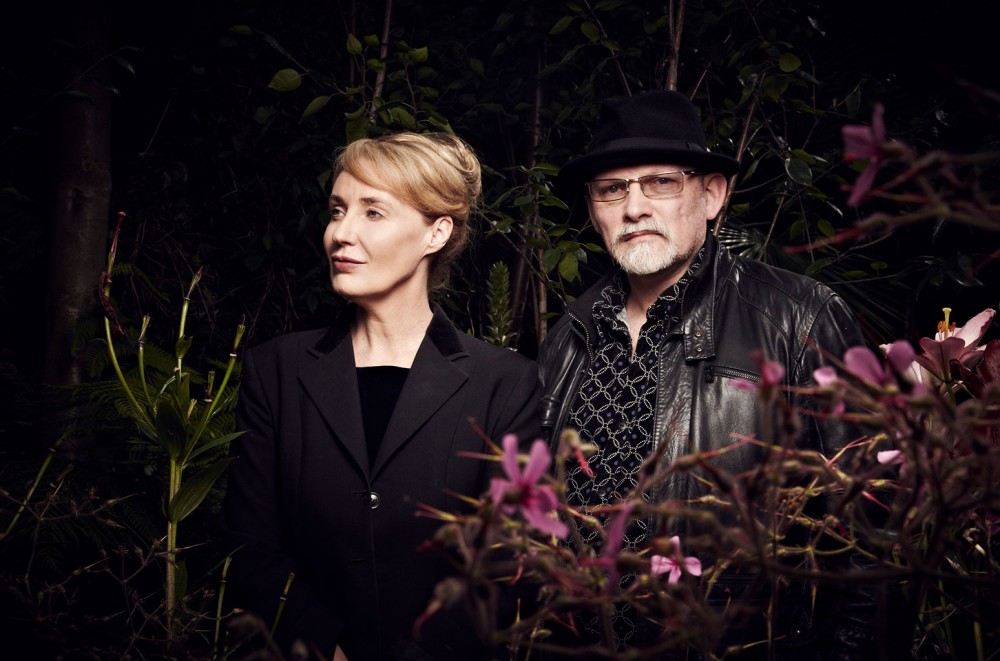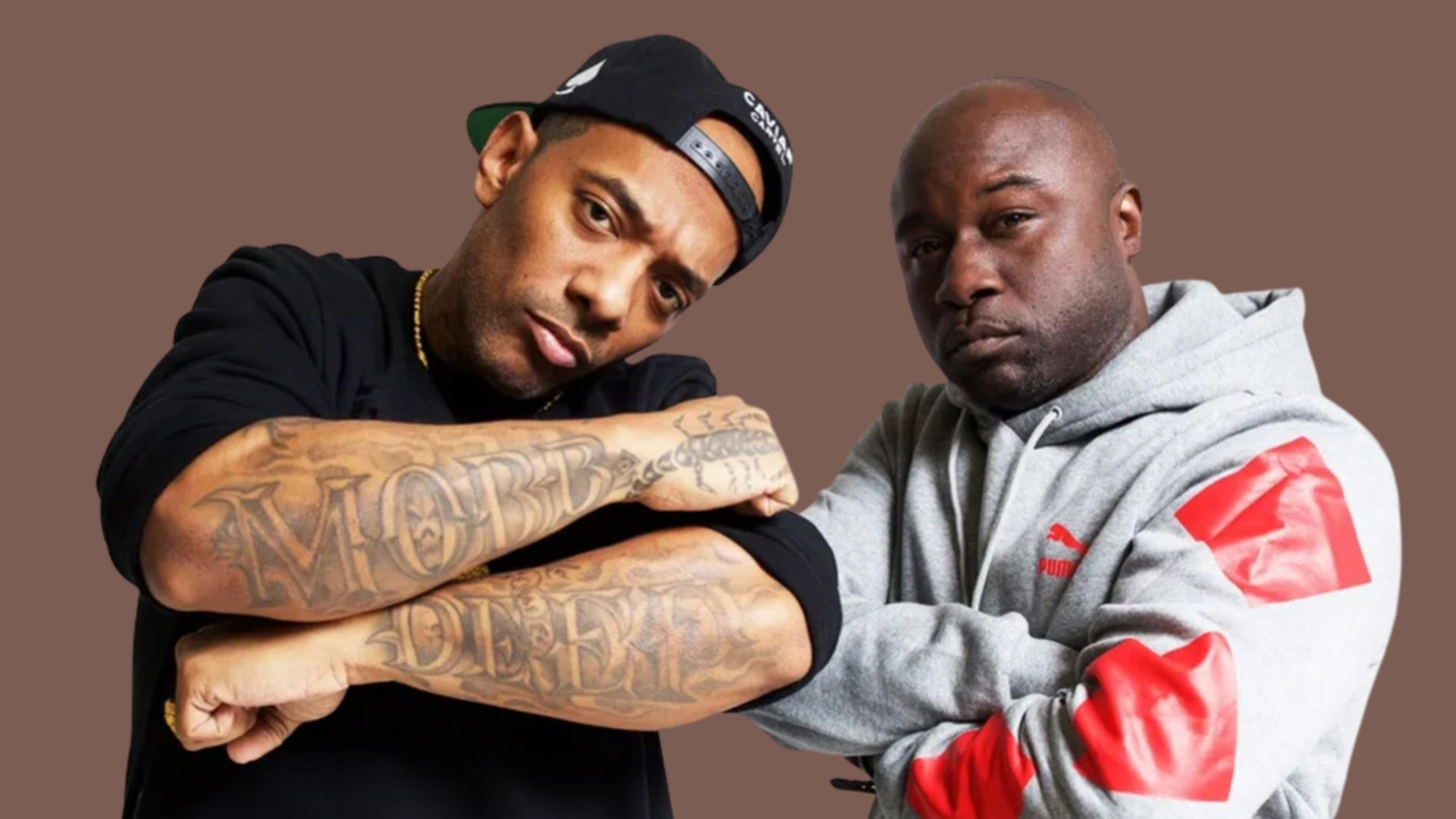Performing: A Celebration of Life & Works 1980-2020 will feature songs previously never heard live.
Even though Dead Can Dance hasn’t played in the United States since 2013’s Coachella festival, it doesn’t seem like much time has passed. Yet the experimental duo of Brendan Perry and Lisa Gerrard are returning from the extended break in April with Performing: A Celebration of Life & Works 1980-2020.
With the tour stretching throughout North and South America, Perry says they have multitudes of friends and family all over, so this outing is a homecoming of sorts. “It’s kind of mixed with music and downtime,” he says. “We’re going to be exploring, seeing some new places and visiting old friends.”
In assembling something epic, tribal and worldly within a theater setting for Life & Works, Dead Can Dance is extracting from 40 years’ worth of music, mixing in favorites like “The Carnival Is Over” and “Yulunga (Spirit Dance)” from 1993’s Into the Labyrinth and “The Host of Seraphim,” off 1988’s The Serpent’s Egg, plus some surprises. Gerrard and Perry have handpicked a setlist that includes songs they’ve never played live before and others left out of their extensive 2019 European tour following the release of their ninth album, 2018’s Dionysus. Mystical and hypnotic, the record is an atmospheric journey rooted in the Greek god of wine, dance, theater, and rituals that moves through several acts, or seasons, of nature.
Ancient in its ritualistic drone of heavier instrumentation and chanting, yet not set in any real time or place, Dionysus lends itself perfectly to the more expansive theater setting. Yet “Act I: Dance of the Bacchantes” is the sole track the duo chose for this tour. “It will give people an idea of what an entire set of Dionysus could sound like,” says Perry.
When it first formed, Dead Can Dance settled into early-’80s post-punk, darker wave with its 4AD labelmates of the time — Cocteau Twins, Bauhaus, Pixies, Throwing Muses, Clan of Xymox — and constructed something more exploratory, shifting around Irish and Balkan folk, Gregorian chants, Middle Eastern incantations, classical and medieval sounds, and other enchanting soundscapes like a musical method actor. Its Billboard chart achievements include four top five entries on the World Albums chart (two of them No. 1s), and the act has amassed 53.1 million on-demand U.S. streams, according to Nielsen Music/MRC Data.
Known for learning to play the hurdy-gurdy and other archaic instruments, this time, Perry’s learning curve is centered on experimenting with a new digital orchestral sound pool library in a live setting. “They are far more nuanced,” he explains. “You can make them sound like real players with real instruments. We’re not 100% there yet, but they give a good approximation through a large sound system.”
When Dead Can Dance returns to New York’s Radio City Music Hall on Apr. 21, the setup will be slightly different from the last time it played the theater with a full orchestra during a 2005 reunion show. More digitized elements will round out Life & Works’ eight-piece ensemble, including Perry’s brother (and Dead Can Dance’s eolian pipe player) Robert, who hasn’t toured with the band since the 1990s. The rest of the live group consists of the same lineup since 2013’s Anastasis tour.
“We won’t move away from songs too much,” says Perry, who wants to incorporate the digital tool into the setlist without shifting the integrity of the songs. “It has been great revisiting older songs with this new technology at my disposal. It’s fun looking through old pieces and deconstructing them again.”
Perry says the digital element adds another dimension to Dead Can Dance, giving it a weight and impact without using a real orchestra. When recording Dionysus with a limited budget, the group would have six string players repeatedly play their parts, double them up, then use sample orchestras to add some heft, creating a hybrid of real players and the sound pool.
“It’s the sound pool] electrified in that sense, and the volume levels far exceed a normal orchestra,” says Perry. “That’s the beauty of it and the thing I like. It doesn’t sound completely authentic. I like that synthetic, cold edge.”
Watch "Act II: The Invocation" from Dionysus below:
There was a six-year gap between Dionysus and 2012’s Anastasis — Dead Can Dance’s first album since 1996’s Spiritchaser — but it wasn’t due to disbanding, which happened in the late ’90s. Perry needed time to relocate the act’s Ireland-based Quivvy Church studio to his new home in the northwestern French region of Brittany, where he resides with his wife and two children. He calls the move a natural one: “We have a really big family here. We’ve spent a lot of Christmases and summer holidays coming here, and I kind of felt like a change, so it was no-brainer to come here.”
Although he was brought up in London, Perry’s parents and Robert remain in Ireland, which is just a plane hop across the coast from his new locale. He remembers spending the entire day on his family’s farm in the Irish countryside during summer visits while growing up and, wanting to return to this idyllic setting, found it in France. “I always have fond memories of leaving the city, then returning at the end of the day was a bit sad — the concrete and the grime and the dirt,” he recalls. “So when the opportunity presented itself, I just became a blue-eyed country boy.”
Living near the sea gives Perry, who now limits city visits to special events, a certain solace and inspiration. “That’s what I like: the peace and quiet away from the maddening crowds,” he says, laughing. “Nature inspires me. Dionysus is similar to that, really. There’s a lot of natural wildlife recorded, and mimicked, on the album.”
Perry is still inspired by Greek history and its arts, which is the basis of his fourth solo album, Songs of Disenchantment, which he’s hoping to release by fall 2020. A follow-up to 2010’s Ark, Perry covered 1930s-era Greek songs called rebetiko. “It’s the first album of its kind actually where the songs are sung in English,” he says. “The storytelling of the songs is really cool, and it would be nice to share them with an English-speaking audience. A lot of people know about this music, but in most cases have no idea what is being sung.”
New music is also in motion from Dead Can Dance, and Perry insists that fans won’t have so many years to wait in between albums this time. Already in discussions with Gerrard about the project, he says their 10th album may take on a neo-baroque style of music.
“We’re making up for lost time, putting out an album every year now,” says Perry with another laugh. “I just turned 60, and Lisa’s not far behind. We feel like our voices are the best they’ve ever been, so we’re trying to do as much as possible before the bodies give up.”
Performing: A Celebration of Life & Works 1980-2020 dates. (Danish singer-songwriter Agnes Obel will provide support at almost all shows.)
April 17: The Met Philadelphia @ Philadelphia
April 19: The Anthem @ Washington, D.C.
April 21: Radio City Music Hall @ New York
April 22: State Theatre New Jersey @ New Brunswick, N.J.
April 24: Boch Center @ Boston
April 26: Meridian Hall @ Toronto
April 28: Masonic Temple Theatre @ Detroit
April 29: The Chicago Theatre @ Chicago
May 1: The Mission Ballroom @ Denver
May 3: Paramount Theatre @ Seattle
May 4: Orpheum Theater @ Vancouver
May 7: The Masonic @ San Francisco
May 9: The Greek Theatre @ Los Angeles
May 11: San Diego Civic Theatre @San Diego
May 12: Santa Barbara Bowl @ Santa Barbara, Calif.
May 14: Auditorio Nacional @ Mexico City
May 16: Teatro Diana @ Guadalajara, Mexico
May 19: Teatro Jorge Eliecer Gaitan @ Bogota, Colombia
May 21: Estacionamiento del Gran Teatro Nacional @ Lima, Peru
May 24: Teatro Municipal de Santiago @ Santiago, Chile



